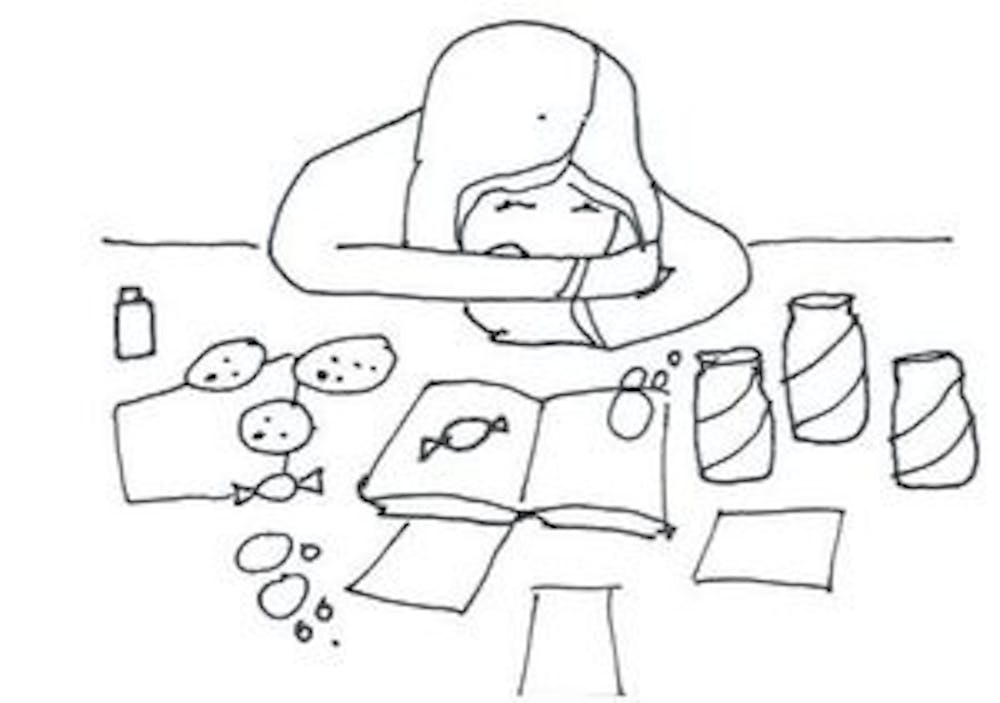Exam week marks the beginning of a time for those of us in the academic world, and with it, long nights at Ralph Brown Draughon library and Starbucks, Caribou coffee cravings, and the old familiar take-out bags, delivered pizzas and an array of plastic utensils.
Let's be honest, where college is concerned, a healthy diet typically is not. We're too busy, too poor and too preoccupied to worry about making healthy food choices. However, additional to inadequate physical activity and increased levels of stress, poor food choices are directly related to weight gain in college students.
According to the American College Health Association, obesity among college students has increased from 27.4 percent in 2006 to 29.2 percent in 2011.
Studies show that obesity increases the likelihood of cardiovascular disease, high blood pressure and type 2 diabetes, as well as other life threatening conditions.
As convenient and appetizing as some fast foods and junk foods may appear, they are more than inconvenient when it comes to maintaining good health. Research shows that diets high in saturated fat, cholesterol, sodium and refined carbohydrates, and low in fruits and vegetables, greatly increases one's risk of chronic diseases, some types of cancer, high blood pressure and obesity.
What can you do this year to make healthier food choices? What does a healthy diet look like? Some basic guidelines to keep in mind are balance, variety, moderation and proportion.
Balance, simply put, is incorporating all of the different food groups in the diet; these include grains, meats and beans, vegetables, fruit, dairy and oils. Eating only one food from each food group, such as french fries for a vegetable serving, isn't going to cut it. We college students have a knack for redundancy in our diets, but since there is no such thing as a "super food," there is no one food that can meet all our nutritional needs.
Variety asks us to eat many different foods within each food group. A good tip when practicing balance and variety is to pay attention to the colors of the foods on your plate; typically, the more variety in colors, the more variety and balance in your meal.
Lastly, practice moderation and proportion. No food has to be excluded from your diet, there just needs to be some control as to how often and how much of it you eat. Moderation will keep "how often" under control, while proportion takes care of "how much."
With basic dietary knowledge, you'll be able to make healthier choices when deciding where and what to eat. Keep in mind that your college life does not have to exclude your good friends Papa John, Jimmy John, Moe or McDonald, but as with any friendship, you two don't need to be attached to the hip; it just isn't healthy. Get out of the box, and try mixing up the foods in your diet.
There are many tasty, affordable and healthy food options on and off of campus; one only needs will power and a little nutrition knowledge to make better food choices.
We are the future, and right now, studies show that our future is becoming a "weighty" issue. Even though making better food choices can seem daunting, eating healthily doesn't have to be hard. It doesn't have to be a migraine or an empty stomach. You don't have to be a rabbit, exile your snack foods or avoid McDonald's.
Get familiar with healthy diet guidelines and learn to read food labels. Most importantly, practice moderation, and just maybe this year, Auburn can become greater on a completely different scale.
Do you like this story? The Plainsman doesn't accept money from tuition or student fees, and we don't charge a subscription fee. But you can donate to support The Plainsman.





